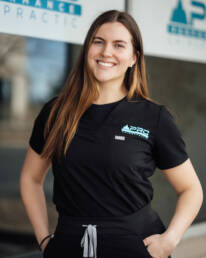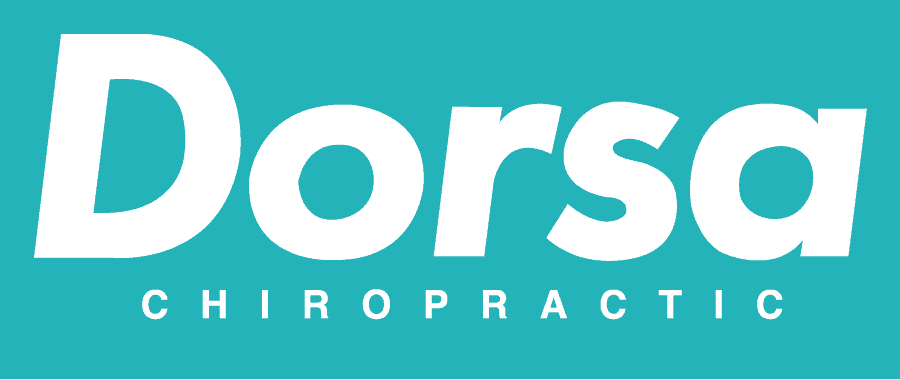Being apprehensive about a new baby infant exam is a normal feeling. This is why we created a step-by-step informational article outlining what you can expect from your new patient infant chiropractic exam.
Questions or Concerns
When the parent(s) come in for their infant’s exam the first thing that we do is chat about any concerns or questions that they might have. Common topics of concern are feeding difficulties, constipation, head rotation preference, and tongue ties. After the parent(s) express their concerns we will walk them through an infant exam, explaining what we are checking or looking for. Before the examination, we will interact with the baby and make sure they feel comfortable laying on a contoured pillow on the table. As the baby is settling in, we are going to be making observations on tone, torsional posture, facial symmetry, skull symmetry, and strength/symmetry of sucking. These observations give us information on hypotonia, dural tension, and cranial nerves.
Range of Motion
Once the baby is settled in, we will start with our examination to assess range of motion, segmental and somatic dysfunction, and reflexes. Range of motion of the limbs will be examined by moving the desired limb in all ranges, for example: moving the arms in front of the baby, to the side, and up to check the range of motion of the shoulder. Here we are making sure that all of the limbs are moving smoothly without any rigidity or abnormal muscle tone. One of the main areas where range of motion is important is within the hips, we want to make sure that they are moving freely and symmetrically to rule out any hip dysplasia pathology.
Palpation
Following range of motion, we will palpate for overall muscle tone, the structure of the clavicle, and the diaphragm. Because the diaphragm is associated with breathing, we want to make sure that the muscles are freely moving and don’t contain any adhesions or trigger points. While the baby is in this position laying on their back, we will perform the Babinski reflex on their feet, which is screening for any neurological deficit located in the central nervous system. The clavicle is an area that requires palpation as it is a common spot for fractures post-birth.
Adjustments of the spine
Next comes palpation and adjustments of the spine. The first place that we like to start with is the tailbone, sacrum, and lumbar spine, ensuring that they feel even and symmetrical. If there is an area that feels off or subluxated, sustained pressure will be placed on that bone in the direction we would like that bone to move. With these adjustments, baby’s body language will usually tell us that we are in the right place, and then the baby will calm down when that area is resolved. Next, the baby will be flipped over onto its stomach, and its gluteal and leg creases will be examined, here we want to make sure that they are even on both sides. If they are uneven this could indicate hip dysplasia or sacral deviation. We will also take note of the cervical spine strength ensuring that they can keep their head up on their own. This is very important in developing the proper curvature of the cervical spine. In this position, we will also palpate the thoracic spine and examine any areas of segmental dysfunction. If an area of segmental dysfunction is noted in the thoracic spine, we will place the baby on their back once more where we are able to adjust that area while stretching their upper back. Next, we will examine the cervical spine passively by rotating the head to the left and right and seeing if the baby has a directional preference. If they do, we can address that area with sustained pressure on either side of their cervical vertebra.
Examining the head and mouth
Following the spine adjustments, we will examine the head including the TMJ, cranial bones, and tongue ties. If there is any facial asymmetry the TMJ can sometimes be the problem, and in order to address that, we will palpate the inside of the mouth using a sterile finger glove. We are feeling the tension located in the back of either side of the mouth in the lateral and medial pterygoid muscles. While examining inside the mouth, we also make sure to check for any tongue ties, shallow hard palate, or restricted range of motion of the lips. We often notice tight TMJ and/or mouth anatomical problems in babies who are experiencing latching or feeding issues. The cranial sutures are an area of particular concern, as when they fuse, we want to make sure that they are fusing symmetrically. For this reason, we do a throughout palpation of the cranial bones and sutures taking note of dural tension, mobility in flexion and extension, and laterality or torque in the cranial base. Once the infant exam is complete, we can answer any questions that came up throughout the examination. Home recommendations can be given on a need-to-need basis. Understanding the ins and outs of a new infant exam can ensure that you feel comfortable bringing your baby in to see a chiropractor. Overall, we are examining range of motion, segmental dysfunction, tone, and pediatric milestones. If you would like to learn more, give us a call at Dorsa Chiropractic.
Common questions
At what age can I bring my baby in to be examined?
As soon as you feel comfortable coming in. The sooner the better, however the most common age we see infants is at two months of age.
Is a pediatric adjustment similar to an adult adjustment?
An infant adjustment is completely different than an adult adjustment. With infants, the adjustment is sustained pressure on a bone, vertebra, or joint that is misaligned. The sustained pressure is done in the direction that we would like that bone to be in and holding it in that position until the baby relaxes.
What are the benefits of an infant chiropractic adjustment?
The main benefit is to ensure that the baby has a healthy musculoskeletal system. With that being said, ensuring they have an adequate range of motion, making sure that they have adequate function of their cranial nerves, and addressing any segmental dysfunction that could be causing other symptoms. Other symptoms that we see include but are not limited to colic, constipation, diarrhea, skin conditions, head tilt, lack of motion, and lack of muscle tone.

About the Author
Dr. Mckenzie Cervini
Dr. Mckenzie Cervini grew up in Leamington, Ontario, Canada where she spent her time playing hockey, running, and teaching swimming lessons to children. Her love for health sciences and helping others paired with her innate interest in infants and children stemmed from her passion for completing her doctorate in chiropractic with a pediatric and pregnancy special interest.
